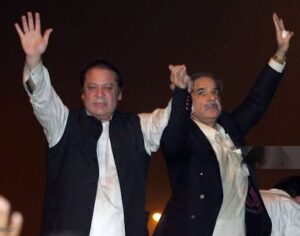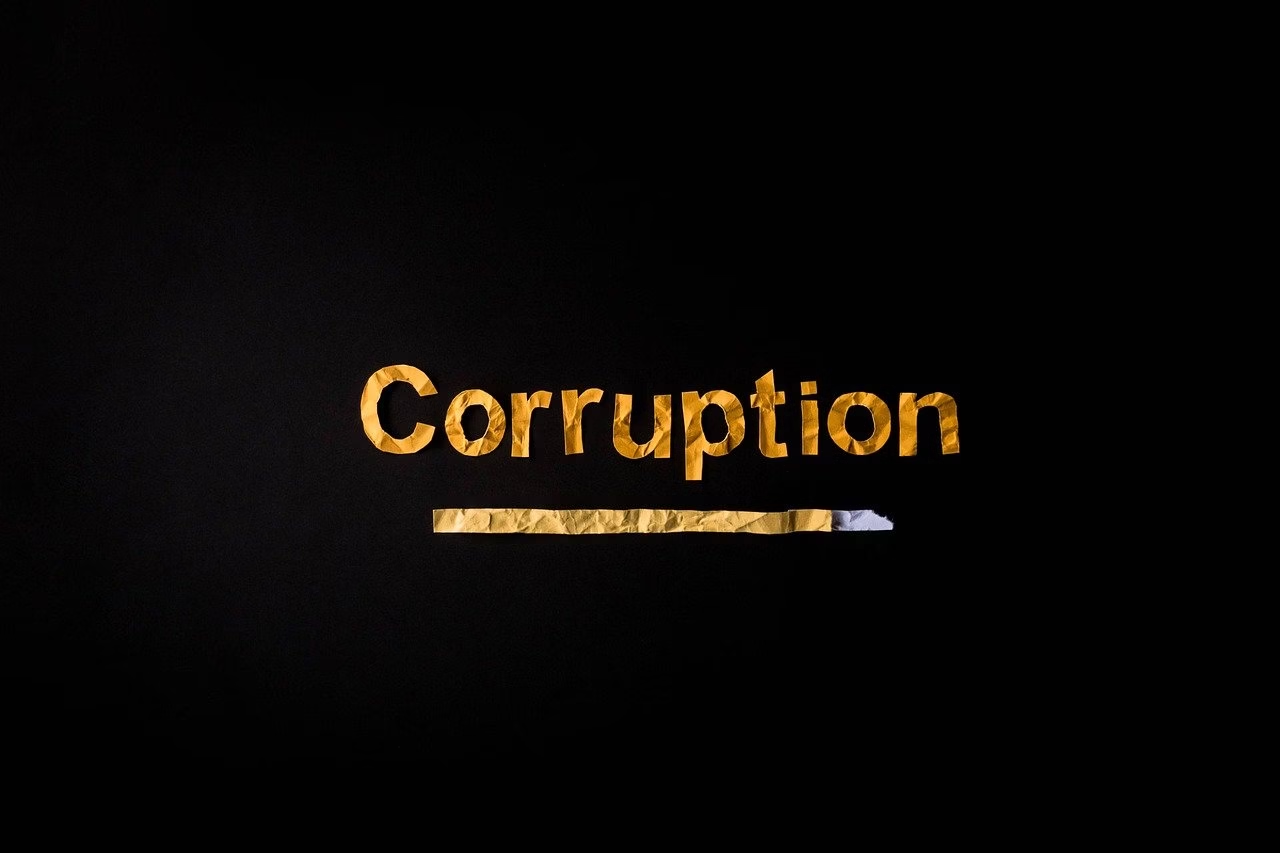Nawaz Sharif, the former Prime Minister of Pakistan, has been a central figure in the country’s political landscape for decades. However, his political career has also been marked by numerous allegations of corruption, leading many to label him as one of the most corrupt politicians in Pakistan’s history. But why has Nawaz Sharif earned this reputation?
In this article, we will delve into the controversies, corruption charges, and legal battles that have shaped his political legacy. From the Panama Papers scandal to his legal convictions, we will examine the key events that contributed to Sharif’s controversial image and explore the broader implications for Pakistan’s political system.
Why Nawaz Sherif labelled as a Most Corrupt Politician ?
Nawaz Sharif, Pakistan’s longest-serving prime minister, has been embroiled in several corruption scandals throughout his tenure in office. These controversies have sparked widespread criticism and raised concerns about the integrity of Pakistan’s government under his leadership.
Sharif began his political career during the 1970s when he joined the Pakistan Muslim League during Zulfikar Ali Bhutto’s term.
The Sharif family had close ties with several prominent political figures. Muhammad Sharif, Nawaz’s father, was a popular and influential man in the business world. In 1979, Sharif was appointed as the Finance Minister of Punjab under the leadership of General Zia-ul-Haq’s military regime.
In 1981, Sharif was appointed Punjab’s Minister of Industries and Production, which further cemented his position in Pakistani politics.
Five years later, he was appointed Chief Minister of Punjab, which further consolidated his political influence in the province. This was the biggest leap in his political career.
After Zia-ul-Haq’s death, the party split. Under Nawaz’s leadership, the conservatives came to power in 1990, making him the 12th prime minister of Pakistan.
Sharif is the longest-serving prime minister of Pakistan for a non-consecutive term, with approximately nine years and 215 days in total.
Why is Nawaz Sharif Called the Most Corrupt Politician?
Nawaz Sharif, the former Prime Minister of Pakistan, has been involved in several corruption scandals throughout his political career, making him one of the most corrupt politicians in the world.
Mehrangate Scandal
Sharif was one of the many directly connected to the Mehrangate Scandal. At the time, he was the PML leader. He had allegedly received 3.5 million from the ISI to fund the election that would secure IJI’s win in the 1990 election, preventing Benazir Bhutto’s Pakistan People’s Party’s victory.
Despite the court’s ruling that found Nawaz and several others guilty, no action was taken against them. This scandal symbolized Pakistan’s most corrupt and manipulated political corruption.
Riggings in the 2013 Election
Nawaz Sharif, who became prime minister when his party, the Pakistan Muslim League (Nawaz) (PML-N), secured a sizable majority in the National Assembly, was intimately linked to the accusations of election tampering in 2013.
The opposition parties, particularly Pakistan Tehreek-e-Insaf (PTI) led by Imran Khan, were the main accusers of electoral fraud and manipulation made against the PML-N and Nawaz Sharif.
Imran Khan and PTI argued that the rigging was particularly concentrated in constituencies in Punjab, where PML-N won by large margins. The rigging allegations significantly impacted Nawaz Sharif’s third term as Prime Minister.
The prolonged protests, particularly the 126-day sit-in by PTI in Islamabad, created political instability and challenged the government’s authority.
Although Sharif was not removed from office due to the rigging allegations, the controversy damaged his political standing. It contributed to distrust between the government and the opposition.
The Yellow Cab Scheme controversy
The Yellow Cab Scheme was introduced during Sharif’s first term as PM. The scheme intended to provide self-employment opportunities to the youth of Pakistan by owning and operating their taxis. However, the scheme quickly became a topic of corruption and mismanagement.
The taxis allegedly were only provided to politically connected individuals rather than the intended beneficiaries. It was reported that sometimes the vehicles were sold at a profit by the owners quickly.
Despite its good intentions, the scheme became a contentious element of Nawaz Sharif’s term. Despite intending to lower unemployment and increase self-employment, the program was dogged by accusations of incompetence, corruption, and poor administration.
Though it gave certain people chances, it had little overall economic benefit and is still a contentious aspect of Nawaz Sharif’s record on economic policy.
Avenfield Apartments Case
One of the most well-known cases involving Sharif, The Avenfield Apartments Case, played a significant role in the former prime minister’s legal troubles and disqualification from public office.
The case resulted from the Panama Paper leaks in 2016, which made the Sharif family’s substantial foreign holdings public. In 2018, Sharif, his daughter Maryam Nawaz, and his son-in-law Capt. Safdar was found guilty by an accountability court.
Maryam received an eight-year sentence. Capt. Safdar had a one-year penalty, and Nawaz had an eleven-year prison sentence. However, in September 2018, the Islamabad High Court suspended the sentences and granted them bail while the appeals were pending.
Hudaibiya Paper Mills Case
Finance Minister Ishaq Dar made allegations of money laundering and financial irregularities related to the Hudaibiya Paper Mills, a company owned by the Sharif family, by submitting a confessionary statement to the magistrate but later withdrew it by stating that it was made under pressure.
It was alleged that the company was used to channel illegal funds and make them appear legitimate. Many of Nawaz’s supporters claimed that the case was politically motivated and aimed at discrediting him.
The Hijacking Incident
The controversial hijacking incident of 1999, widely known as the “Hijacking of the Pakistan International Airlines (PIA) Plane,” is frequently linked to the dramatic events surrounding Prime Minister Nawaz Sharif’s administration’s response to a plane hijacking crisis.
A group of armed people hijacked a Boeing 737 operated by Pakistan International Airlines (PIA) on August 29, 1999. In an attempt to use the plane as leverage to further their objectives, the hijackers demanded the release of their fellows who were being held captive in Pakistan.
The hijackers initially took over the aircraft while it was being flown domestically from Lahore to Karachi. After the aircraft was rerouted, they demanded the Pakistani government to make political concessions and a ransom.
After the hijacking was resolved, the case took on a political dimension. Sharif was accused by his political opponents and some critics of mishandling the crisis and being ineffectual in his response.
The crisis, combined with his other controversies and political struggles, led to further scrutiny of his administration.
The incident was overshadowed by more significant political and legal issues later in Nawaz Sharif’s career, including the Panama Papers scandal and various corruption cases.
Al-Azizia Steel Mills and Flagship Investments Cases
Al-Azizia Steel Mills, a company owned by Nawaz Sharif’s family, was accused of financial misconduct and money laundering. Nawaz Sharif was accused of using the company to launder money and acquire assets beyond his declared income sources.
In December 2018, Nawaz Sharif was sentenced to 7 years in prison and fined Rs. 1.5 billion. The court also ordered the confiscation of the company’s assets.
Flagship Investments, another company linked to Sharif, was also investigated for financial irregularities. Nawaz Sharif was accused of using the company to conceal illegal funds and acquire assets without a legitimate source of income.
In July 2018, Nawaz Sharif was sentenced to 1 year for failing to explain the company’s assets satisfactorily. The former PM was sentenced to prison for this case but was granted bail on medical grounds.
The case, alongside the Al-Azizia case, contributed to his political downfall and legal battles. Even the OCCRP has several reports on these scandals.

Former Pakistani prime minister Nawaz Sharif (L) and his brother Shahbaz Sharif (R)
Image credits: gettyimages – AAMIR QURESHI
Why was Nawaz Sharif dismissed from the government in 1993?
First Dismissal (1993)
Sharif faced his first dismissal as Prime Minister in 1993. The situation arose from a series of political and constitutional crises between his government and the then-President, Ghulam Ishaq Khan. In April 1993, the political situation reached a breaking point.
President Ishaq Khan decided to dismiss Nawaz Sharif’s government and dissolve the National Assembly, citing issues of mismanagement and corruption.
The former prime minister challenged the dismissal in the Supreme Court, arguing that it was unconstitutional. The Supreme Court ruled in favor of Sharif, leading to his reinstatement as Prime Minister.
Exile (1999)
The second dismissal and subsequent exile of Sharif occurred in October 1999 during the Kargil conflict with India. The situation led to a conflict between Sharif and the military, particularly General Pervez Musharraf.
Amidst the turmoil, Musharraf led a military coup on October 12, 1999, deposing Sharif. Sharif was arrested, convicted of corruption, and later exiled to Saudi Arabia in December 1999 under international pressure.
Corruption isn’t limited to Pakistan—many countries around the world are grappling with similar issues. One such case is Thailand, where the government recently declared a staggering $400 million in assets linked to a major political corruption scandal. This revelation underscores the global scale of corruption, with even high-ranking officials in Thailand facing scrutiny for their illicit wealth. To learn more about how Thailand has dealt with corruption and asset declarations, read our article on Thailand Declares $400M Assets.
Nawaz has been in London on bail for medical treatment since 2019. In the Avenfield and Al-Aziza cases, the Islamabad High Court granted him protective bail until October 24 despite a Pakistani court having declared him an absconder. He returned to Pakistan in 2023 following four years of exile.
FAQ’s
Is Nawaz Sharif a good prime minister?
Nawaz Sharif’s tenure had successes in infrastructure and economic projects but faced criticism for corruption and lack of reforms. Public opinion on his leadership varies widely.
Is Nawaz Sharif the most corrupt person in the world?
Nawaz Sharif has faced significant corruption allegations, including his involvement in the Panama Papers scandal, which led to his disqualification as prime minister in 2017. While he is not officially labelled as the “most corrupt person in the world,” critics argue that his tenure symbolizes the systemic corruption and misuse of power prevalent in Pakistan’s political system.







